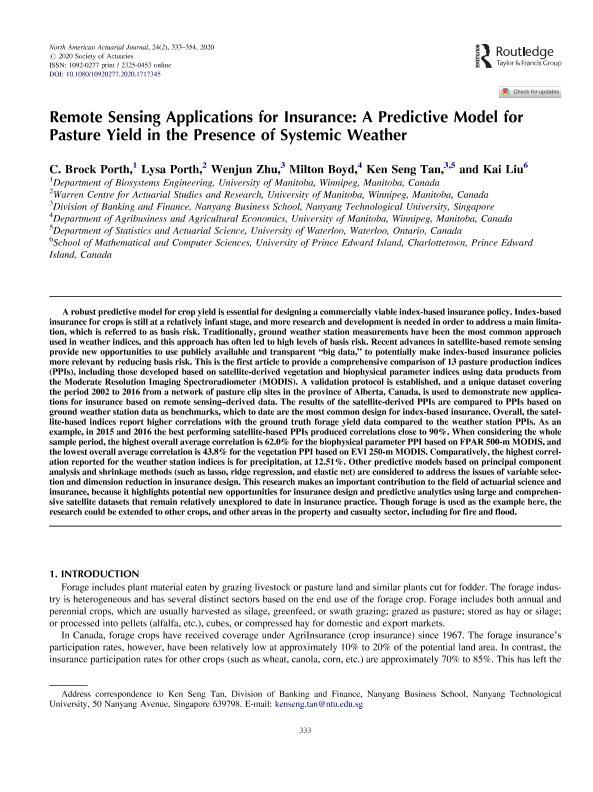Outras classificações: 6
Atrás
Remote sensing applications for insurance: a predictive model for pasture yield in the presence of systemic weather

Contenido multimedia no disponible por derechos de autor o por acceso restringido. Contacte con la institución para más información.
Outras classificações: 6

